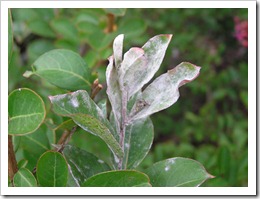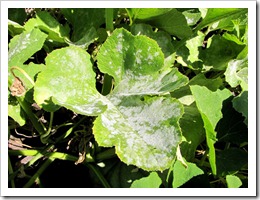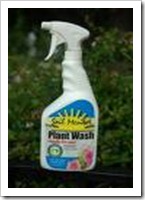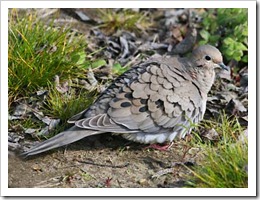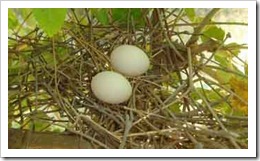Powdery mildew is one of the most common and easily recognized diseases on Oklahoma plants. Given the right conditions almost no plant is immune to it however some plants are more susceptible than others. Some of Oklahoma’s most susceptible plants to powdery mildew are Crepe Myrtle, Lilacs, phlox, roses, squash and cucumbers.
Powdery Mildew on Crepe Myrtle
Recognizing Powdery Mildew
As the name implies, powdery mildew looks like powdery splotches of white or gray powder on the leaves and stems of plants. Even though there are several types of this fungi, they all look basically the same.
When you do finally notice powdery mildew it is usually on the top surfaces of the leaves. Up on closer examination you may see the powdery looking fungus also on the stems, flowers, buds and even the fruit on the infected plant.
Although powdery mildew is unattractive, it is rarely fatal. It does stress the plant and severe or repetitive infections will weaken the plant. If enough of the leaf surface becomes covered with powdery mildew it will usually fall off prematurely.
The real harm to your Oklahoma plants occur when the powdery mildew effects the photosynthesis of the plant. Edible crops with insufficient photosynthesis will suffer from diminished flavor in the fruit or vegetable. If buds become infected,like on Oklahoma Crepe Myrtle or your roses they may not open and mature at all.
Squash infected with Powdery Mildew
Powdery Mildew Is Host Specific
This is probably the only positive thing about powdery mildew. Host specific means that is will not spread from your roses to your Crepe Myrtle however, all powdery mildews favor the same conditions.
What Causes Powdery Mildew?
Powdery mildew fungi overwinters in plant debris and begin producing spores in the spring (another reason to clean out those beds). The spores can be introduced to your plants by wind, insects or splashing water.
Conditions that encourage the growth and spread of powdery mildew include:
- Dampness or high humidity (Not common during rainy seasons or in extreme heat)
- Crowded plantings
- Poor air circulation
Treatment for Powdery Mildew
I use it, it works and it is not toxic! PLANT WASH
You will also find chemical treatments available in local stores. Be sure the product is used in the treatment of Powdery Mildew. This can be found by reading the label of the product you are considering purchasing. Also make note of recommend applications. More is never good with chemicals and often hurts the plant.
I would also recommend cleaning out the debris from your gardens along with following recommended planting procedures and locations when putting in plants.
You can also want to remove the infected parts. If you do remove these parts do not compost them but bag and place in a trash receptacle. Why, because powdery mildew is a fungus and has spores. Plus, whatever tool you use to remove the infected parts should be cleaned thoroughly and have the blades wiped down with a disinfectant.
Do not forget to feed and water the birds!
Morning Doves mate for life and are without a doubt one of the worst nest builders around. You can only hope the Oklahoma wind does not blow the eggs out.
The “Original” Red Dirt Gardener
Sharing my gardening interests with others is not only enjoyable but allows me to share with others what I have learned. Whether you play the Native American Flute, ride a Harley Davidson, collect vintage automobiles, quilt with friends and neighbors, show dogs or horses, play sports, or own a small business…. consider SHARING YOUR PASSION WITH OTHERS! I recommend Digital Seasons of Life for your very own affordable website.
They are an Oklahoma company that has been a joy to work with . Digital Seasons of Life’s sites are simple for me to update with new articles and pictures and they are always there when I need them. Share your passion and contact them today.
Save $25 on site design and your first year of hosting for free ($100 value).
